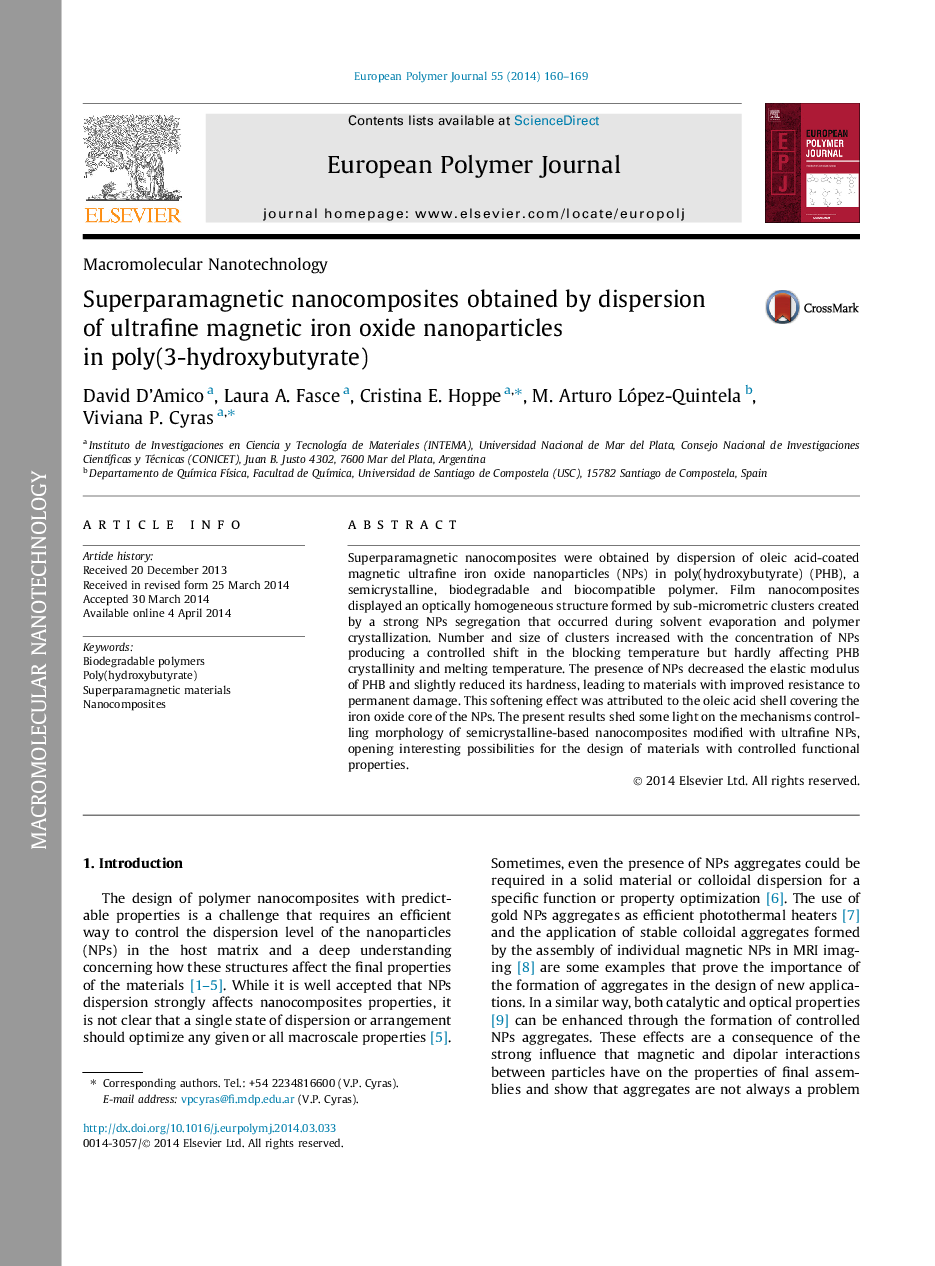| Article ID | Journal | Published Year | Pages | File Type |
|---|---|---|---|---|
| 1399520 | European Polymer Journal | 2014 | 10 Pages |
•Superparamagnetic nanocomposites films were obtained from ultrafine NPs and PHB.•NPs were segregated to the amorphous phase of PHB during crystallization.•Magnetic properties were mainly controlled by number and size of dispersed clusters.•NPs slightly improved the mechanical behavior of PHB.•NPs distribution was strongly controlled by crystallization of the PHB.
Superparamagnetic nanocomposites were obtained by dispersion of oleic acid-coated magnetic ultrafine iron oxide nanoparticles (NPs) in poly(hydroxybutyrate) (PHB), a semicrystalline, biodegradable and biocompatible polymer. Film nanocomposites displayed an optically homogeneous structure formed by sub-micrometric clusters created by a strong NPs segregation that occurred during solvent evaporation and polymer crystallization. Number and size of clusters increased with the concentration of NPs producing a controlled shift in the blocking temperature but hardly affecting PHB crystallinity and melting temperature. The presence of NPs decreased the elastic modulus of PHB and slightly reduced its hardness, leading to materials with improved resistance to permanent damage. This softening effect was attributed to the oleic acid shell covering the iron oxide core of the NPs. The present results shed some light on the mechanisms controlling morphology of semicrystalline-based nanocomposites modified with ultrafine NPs, opening interesting possibilities for the design of materials with controlled functional properties.
Graphical abstractFigure optionsDownload full-size imageDownload as PowerPoint slide
